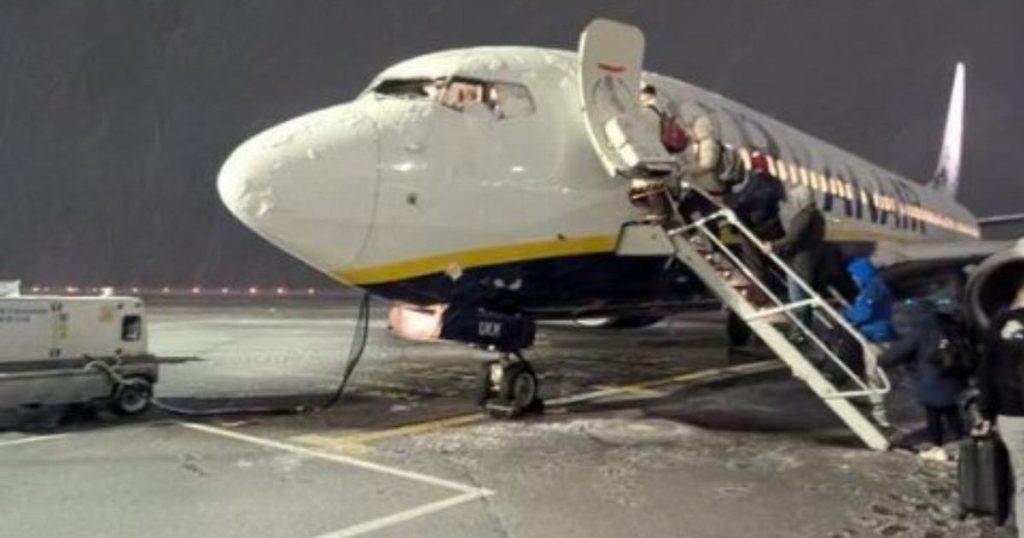The UK experienced widespread travel disruption on January 6, 2025, due to heavy snowfall, ice, and rain. Manchester and Bristol airports were forced to close their runways for several hours, leading to flight delays and cancellations. Road travel was also affected, with numerous vehicle collisions and stranded cars reported, especially across northern England. The adverse weather conditions also prompted school closures throughout the north, predominantly in Yorkshire. Weather warnings for snow and ice were issued across Scotland and central and eastern England. Manchester Airport specifically faced two weather warnings: heavy rain until 8am and snow and ice until midday. Despite reopening its runways, the airport advised passengers to anticipate delays.
Manchester Airport, although operational again after the temporary snow-related closure, continued to experience heavy delays. Of the scheduled flights, three were cancelled outright: routes to Abu Dhabi, Zurich, and Copenhagen. A further 35 departures faced delays. The airport remained under two active weather warnings, addressing heavy rain and snow/ice conditions. Leeds Bradford Airport in Yorkshire also struggled with heavy snow, impacting flight operations.
Rail travel faced significant disruption due to flooding. All railway lines between Derby and both Nottingham and East Midlands Parkway were closed, affecting CrossCountry and East Midlands Railway services. The same operators faced further disruption due to flooding between Peterborough and Leicester. Southeastern trains were unable to operate from Ramsgate or Margate toward London via Canterbury West due to a fallen tree obstructing the tracks. Flooding near Hooton, Cheshire, led to the suspension of Merseyrail’s Chester services and limited Ellesmere Port services to Hooton.
The threat of flooding loomed large across England, with the number of flood warnings increasing from 139 to 159. A yellow weather warning for rain was in effect across most of southern England. The Met Office warned of potential travel delays, stranded vehicles, power outages, and the possibility of isolated rural communities. Less severe flood alerts, numbering 288, indicated areas where flooding was “possible.” These alerts served as a precautionary measure, urging residents to be vigilant.
The reopening of Manchester Airport’s runways brought a measure of relief, but the impact of the earlier closure lingered in the form of delays. Passengers were advised to check with their airlines for updated flight information and to allow extra time for their journeys. The persistent snowfall in Yorkshire continued to pose a challenge for Leeds Bradford Airport, requiring snow ploughs to clear the runway and maintain limited operations.
The widespread disruption caused by the severe weather highlighted the vulnerability of transportation networks to adverse conditions. From airport closures and flight cancellations to flooded railways and treacherous roads, the impact was felt across various modes of transport. The combination of heavy snow, ice, and rain created a perfect storm for travel chaos, necessitating closures, delays, and warnings across the UK. This event underscored the importance of preparedness for extreme weather and the need for robust infrastructure to mitigate the effects of such disruptions. Further information on navigating the challenges presented by the snow included guidance on walking dogs in snowy weather, the impact on sporting events (including a “safety meeting” regarding a Liverpool vs. Manchester United football match), and a prompt to subscribe to news updates for the latest information.











